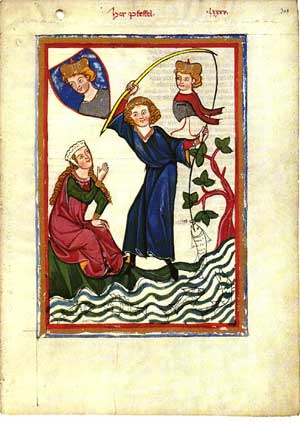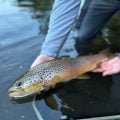Was Dame Juliana Berners Real?
Have a question you want answered? Email it to us at ask@midcurrent.com.
Question: I was under the impression that Dame Juliana Berners—the so-called “first lady of fly fishing”—was a myth, but I continue to run into her name in books and articles. Was she real or not?
Jose S., Worcester, MA
 Answer: Good myths die hard, and despite the fact that most historians find evidence of Dame Juliana’s existence sketchy at best, many sources still treat her authorship of Treatyse of fysshynge wyth an Angle, a 1496 addendum to the Boke of St. Albans, as fact. Even that paragon of accuracy and authority, Wikipedia, casts no doubt on the subject. And it is a great story, claiming that the first book on fly fishing was written by an angling nun in the late 15th century. Unfortunately, it’s probably not true. Andrew Herd, who has emerged over the last decade as the preeminent historian of the sport, has laid out the case for Dame Juliana’s authorship of the Treatyse, and finds it seriously wanting. As he writes on his Web site, flyfishinghistory.com:
Answer: Good myths die hard, and despite the fact that most historians find evidence of Dame Juliana’s existence sketchy at best, many sources still treat her authorship of Treatyse of fysshynge wyth an Angle, a 1496 addendum to the Boke of St. Albans, as fact. Even that paragon of accuracy and authority, Wikipedia, casts no doubt on the subject. And it is a great story, claiming that the first book on fly fishing was written by an angling nun in the late 15th century. Unfortunately, it’s probably not true. Andrew Herd, who has emerged over the last decade as the preeminent historian of the sport, has laid out the case for Dame Juliana’s authorship of the Treatyse, and finds it seriously wanting. As he writes on his Web site, flyfishinghistory.com:
The only clue to the authorship of the Treatyse is an attribution at the end of the book of hunting in the 1486 edition of the Boke of Saint Albans. The attribution reads: “Explicit Dam Julyans Barnes in her boke of huntyng.” In the later, 1496 edition, the spelling is altered to Bernes. It seems little enough to go on, but it didn’t stop a good deal of elaboration by later authors. I guess you can’t keep a good story down.
Sixty-three years later, in 1559, John Bale published Catalog of Great Britain’s Illustrious Writers, which included a vignette about Dame Juliana that is the basis for all the mythologizing that followed. Bale claimed that she was “an illustrious female” who “held the sports of the field in the highest estimation.” Bale supposedly based this information on the claims of a fellow antiquary named John Leland, but there is nothing in Leland’s collection of books to support the Dame Juliana story. Bale’s version of events was picked up in 1595 by Gervais Markham in his The Gentleman’s Academie; Or, The Books of St. Albans. Markham was so widely read that the authors that came later accepted as fact Dame Juliana’s role in as author.
Further embellishment of the tale came from a copy of the Boke of St. Albans that has a handwritten inscription from a man named William Burton in the flyleaf:
This Booke was made by Lady Julian Berners, daughter of Sr. James Berners, or Berners Roding, in Essex, Knight, & Sister to Richard Lord Berners. She was Lady Prioresse of Sopwell, a Nunnery neere St. Albons, in weh Abby of St. Albons this was first printed in 1486, 2 H. 7. She was living in 1460, 39 H. 6. according to John Bals, Centur. Fol. 611.
However, no one knows how Burton came up with these “facts,” for no evidence has surfaced that supports them.
Herd admits that, while there is no evidence of her existence, there’s also no evidence that she didn’t exist. Recordkeeping at the time was spotty, at best. However, the otherwise good records left by Sopwell Abbey—founded in 1140 and dissolved in 1537—contain a gap from 1435 to 1480, which is when Dame Juliana would have been there. It’s starting to sound like a conspiracy, no? Someone call Dan Brown.











